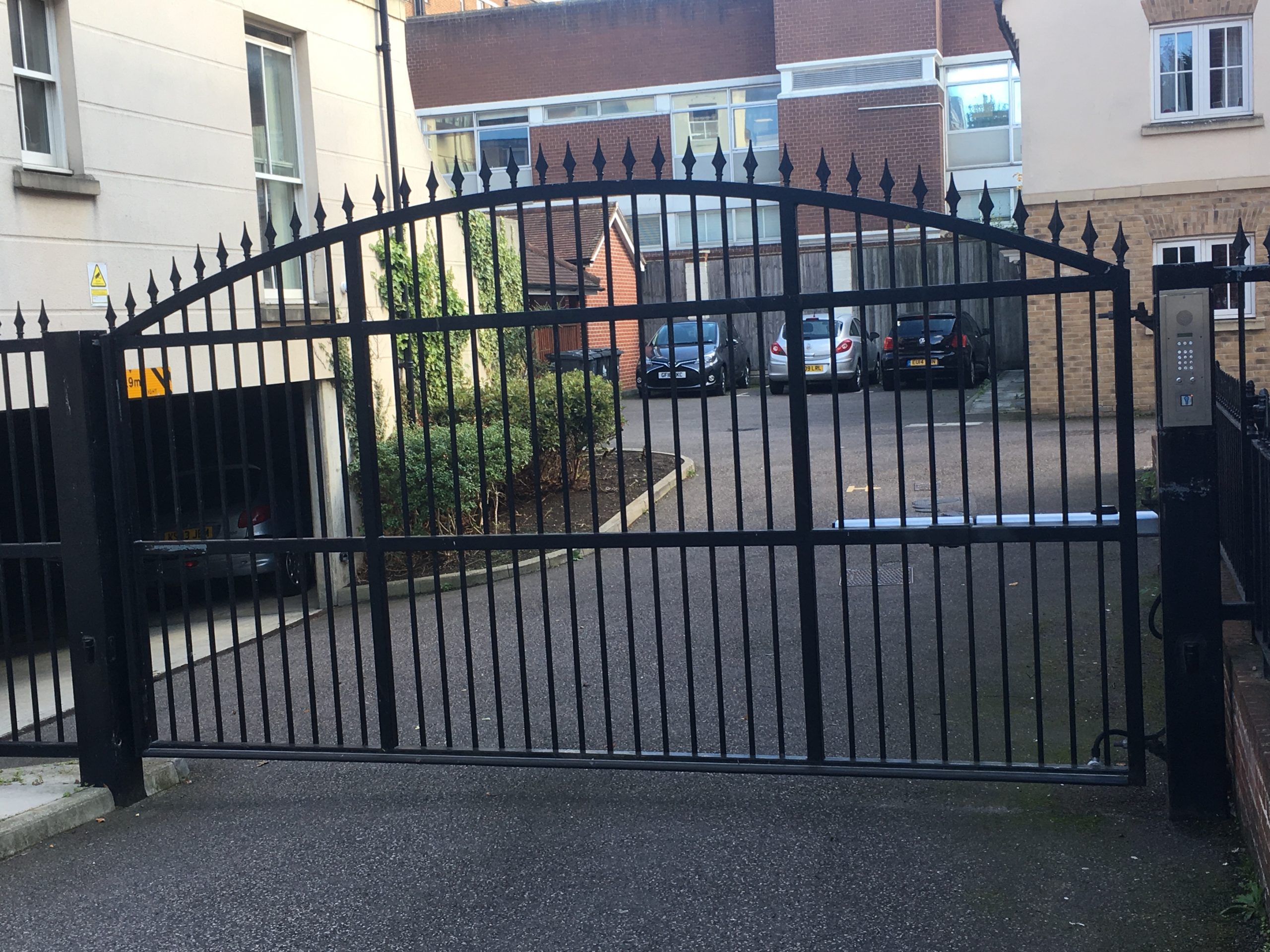Knowledge and understanding of the protocol required to deliver a safe gate or barrier has been heightened by access to specialist training such as the IOSH approved course provided by Gate Safe.
Gate installers now have a much stronger appreciation of the potential dangers associated with these installations – and indeed their legal as well as moral responsibility to ensure their safety. But it’s not just the installer who needs to be aware of the possible risks and how to mitigate them.
There is a duty of care along the whole supply chain, but who is involved?
The manufacturer
Safety should be the starting point for any gate design – manual or automated. But for a gate that is scheduled to be automated on site (very few manufacturers supply a complete ‘plug in and go’ option), the manufacturer should be mindful of the need to supply a gate that is safe by design.
Some examples of considerations that manufacturers should incorporate include:
- All swing gates supplied should feature three hinges or have a suitable tether to prevent the gate leaf from falling.
- Finger guards should be supplied as standard to prevent crushing between the swing gate leaf and post.
- Gates should not be designed in such a way as to provide easy footholds.
The architect or specifier
Architects are traditionally involved in larger, high value commercial projects but many a homeowner may also choose to employ an architect’s services when making major home improvements, which could include the installation of an automated gate.
Architects are therefore obliged to demonstrate an awareness of automated gate safety and the various factors that could jeopardise the wellbeing of any gate user – either on foot or in a vehicle.
The architect must be mindful of the physical factors on site, such as any sloping across the gateway and the width of the gateway and its impact on wind resistance. In addition they should think carefully with regard to the aesthetic style of the gate and the materials used, the desired method of entry and exit and the required number of gate operations per day. The architect’s specification should always consider the implications of a power outage, detail the requirement for access to a key safe, to house the keys to put the gate into manual operation and of course, must incorporate the appropriate number and correct siting of photocells, light curtains or laser scanners and pressure edges to deliver the added safety measures to prevent the gate making contact with a person.
The sales person
Staff involved in the sales of automated gates or associated equipment should be suitably educated, so that they can pass on the relevant information to customers and provide informed advice on the steps that must be taken to purchase a safe and legally compliant installation.
The electrician
The electrician is technically the last person to touch the gate, and the professional whose actions to handle the power connection, renders the gate automated and as such, a machine. Electricians need to be familiar with the different types of gates and gate operators, the various methods of entry and exit, the vital features that must be present on any automated gate or barrier to mitigate any risks and the wide range of additional factors that will influence the overall safety of the installation. Electricians must also be aware of their role in takin responsibility for the gate following any adaptations to an existing structure. Changes to the gate controls or undertaking any other changes, manual or electrical, places the electrician in a position where he immediately assumes responsibility for the safety of the ‘machine’.
Gate owner
Whether the gate is the property of a homeowner, a commercial entity, a school or similar educational establishment, the owner of the gate should always be informed of the hazards that must be avoided in relation to this type of installation. The owner also needs to be clearly advised on their duty of care to maintain the gate in line with best practice via regular maintenance visits by a professional, but also
by undertaking routine basic maintenance checks themselves. For example, during the winter months, a build-up of snow, leaves or similar debris can impact the efficient functioning of photocells so the owner should be proactive in ensuring the transmission path of the photocell is not obscured in any way.
The gate owner must be confident in their ability to stop the gate in an emergency situation and be fully aware of the repercussions of any major changes to the site which could alter the safe running of the system.
Other professionals
In addition to the above audiences, there are others who have an implied responsibility to help reduce the number of automated gate accidents by upholding the appropriate guidance.
Estate agents, letting agents, property management agents, surveyors and even insurance surveyors all have a part to play in communicating the right messages – and where relevant reaching out to the appropriate specialists – to ensure the safety of a gate or barrier.
Gate Safe will continue its campaign to improve awareness amongst ALL those involved in the automated gate sector supply chain, offering practical advice and training to a wide range of professionals.
